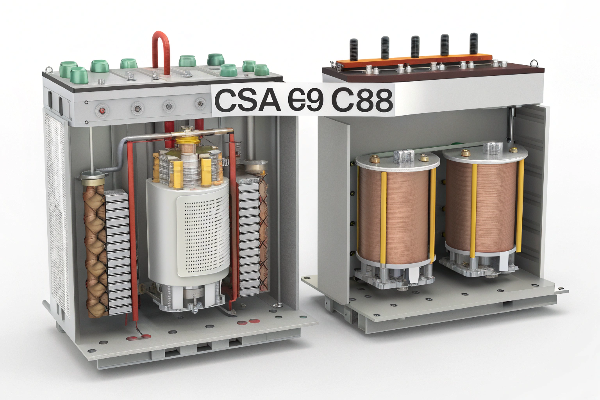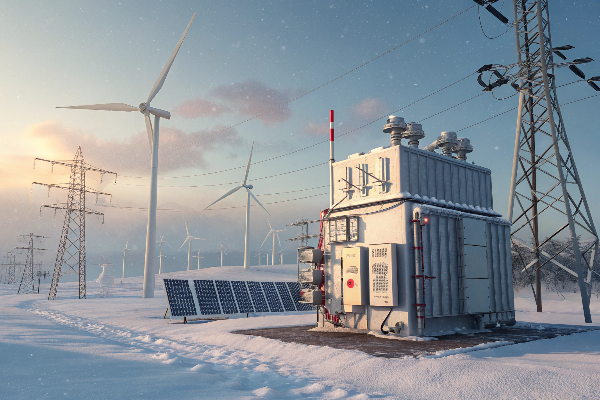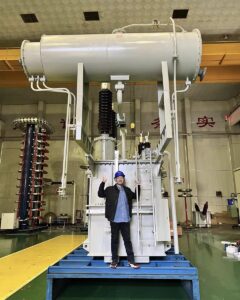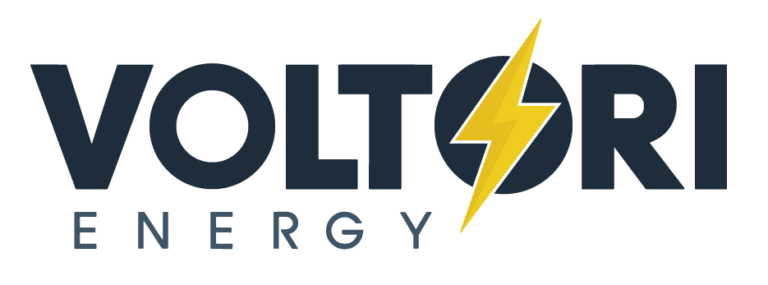Power transformers are critical components in renewable energy systems, but navigating Canadian certification requirements can feel overwhelming. Many project managers face delays and unexpected costs when transformer specifications fail to meet CSA standards.
CSA standards for transformers in renewable energy primarily include C22.2 No. 47 for general requirements, C9 for dry-type transformers, C88 for power transformers, and C227.1 for liquid-filled distribution transformers. These standards ensure safety, performance, and compatibility with Canadian electrical systems and environmental conditions.
 transformer certification standards](https://voltoritransformer.com/wp-content/uploads/2025/08/image-1-csa-standards-for-transformers-style-in.png)
Understanding these standards isn't just about compliance—it's about ensuring your renewable energy project operates reliably in Canada's unique conditions. Let me walk you through the key CSA standards that matter for your transformer selection and what they mean for your project success.
What Is CSA C22.2 No. 47 And Why Is It The Foundation For Transformer Certification?
When sourcing transformers for renewable installations, I've seen many clients get caught off-guard by certification issues. Without proper CSA C22.2 No. 47 compliance, even high-quality transformers can be rejected by local inspectors, causing costly project delays.
CSA C22.2 No. 47 is the fundamental standard for transformer safety in Canada, covering construction requirements, electrical ratings, insulation systems, and testing procedures. This standard ensures transformers can operate safely within Canadian electrical systems while maintaining required performance characteristics under various operational conditions.
 requirements CSA [C22.2 No. 47](https://webstore.ansi.org/standards/csa/csac2247m1990r2012) certification testing](https://voltoritransformer.com/wp-content/uploads/2025/08/image-2-transformer-testing-to-csa-c22-2-no-47-r.png)
As Supply Chain Director at Voltori Energy, I've learned that CSA C22.2 No. 47 goes beyond basic safety requirements. It establishes critical parameters that directly impact transformer performance in renewable energy systems. The standard specifies minimum requirements for transformer construction, including core materials, winding methods, and connection types that affect efficiency and reliability.
| Key Aspects of CSA C22.2 No. 47 | Requirements | Impact on Renewable Energy Applications |
|---|---|---|
| Temperature Rise Limits | Must function in extreme temperatures (-40°C to +40°C) | Critical for northern installations where ambient temperatures vary dramatically |
| Dielectric Strength Testing | Higher test voltages than some international standards | Ensures insulation can withstand grid fluctuations common with renewable integration |
| Short-Circuit Testing | Mechanical and thermal stress verification | Validates transformer can handle fault conditions in variable generation scenarios |
| Documentation Requirements | Complete test reports and nameplate information | Essential for inspection approval and commissioning process |
One aspect that frequently causes issues is the temperature rise limits under Canadian conditions. Unlike international standards, CSA C22.2 No. 47 accounts for Canada's extreme temperature variations. I recall a project in Northern Alberta where we had to reject transformers that met IEC standards but couldn't satisfy the CSA requirements for operation at -40°C. When sourcing transformers, I always verify that manufacturers provide comprehensive test reports demonstrating compliance with each requirement of CSA C22.2 No. 47.
How Do CSA C9 And C88 Standards Differ For Various Transformer Types?
I've found that clients often assume all transformers follow identical certification paths, only to discover significant differences between dry-type and oil-filled units. This misunderstanding has led to project timeline extensions when the wrong standard was referenced in procurement specifications.
CSA C9 governs dry-type transformers with detailed requirements for ventilation, temperature rise, and insulation systems specific to non-liquid cooling. Meanwhile, CSA C88 focuses on power transformers, emphasizing load requirements, cooling systems, and protective features for larger capacity units typically used at substations and grid interconnection points.

The differences between these standards reflect the unique operational characteristics and safety considerations for each transformer type. For dry-type transformers under CSA C9, I've found that ventilation requirements are particularly stringent. When installing these units in solar inverter houses or wind turbine nacelles, proper clearance for heat dissipation becomes critical.
| Comparison Factor | CSA C9 (Dry-Type) | CSA C88 (Power Transformers) | Application Considerations |
|---|---|---|---|
| Cooling Method | Air ventilation requirements | Oil cooling system specifications | Affects installation space and environmental controls |
| Installation Environment | Indoor/protected environment focus | Outdoor durability requirements | Determines housing and protection needs |
| Temperature Rise Limits | Based on insulation class | Based on cooling method and load profile | Impacts sizing and thermal management |
| Non-Linear Load Handling | Limited provisions | Comprehensive harmonic mitigation | Critical for inverter-connected renewable systems |
| Environmental Protection | Minimal containment requirements | Oil spill containment specifications | Important for environmentally sensitive areas |
| Noise Level Requirements | Stricter limits for indoor use | Variable based on installation location | Affects site planning and sound mitigation |
Through years of procurement experience, I've developed specific technical specification templates that clearly identify which CSA standard applies to each transformer type in our projects, ensuring suppliers understand the certification requirements before manufacturing begins. This approach has helped avoid the costly delays I've seen when transformers arrive onsite without the proper certification documentation.
What Makes CSA C227.1 Critical For Renewable Energy Installations?
Early in my career, I encountered a solar farm project that faced serious commissioning delays because the transformers weren't properly rated for Canadian climate conditions. The European supplier had met IEC standards but missed critical requirements specific to CSA C227.1.
CSA C227.1 specifically covers liquid-filled distribution transformers up to 46kV used in renewable energy installations, with stringent requirements for extreme temperature operation (-50°C in northern regions), enhanced insulation for grid fluctuations, and special provisions for connection to intermittent generation sources like wind and solar.

CSA C227.1 has become increasingly important as renewable energy installations expand into more remote and challenging Canadian environments. The standard addresses specific challenges that I've seen firsthand in our projects across different provinces.
| Key Features of CSA C227.1 | Specific Requirements | Renewable Energy Application |
|---|---|---|
| Extreme Weather Operation | Functionality at temperatures down to -50°C | Essential for remote northern wind and solar installations |
| Insulating Fluids | Specific cold-weather rated fluids | Prevents protection system malfunctions in winter |
| Cycling Load Capability | Enhanced testing for daily thermal cycling | Addresses solar farm's unique generation pattern |
| Fault Current Management | Specific protection coordination features | Accommodates distributed generation characteristics |
| Harmonics Handling | Design provisions for inverter-generated harmonics | Prevents premature transformer failure from heat |
| Environmental Protection | Enhanced containment for sensitive areas | Critical for installations near water bodies |
For renewable energy applications, I've learned that meeting CSA C227.1 in conjunction with CSA C22.2 No. 259 for renewable energy inverter systems integration is critical. Our transformers must be compatible with these systems, which sometimes requires additional testing beyond standard CSA requirements. Through managing our certification process, I've developed relationships with testing laboratories like Intertek and UL that help expedite our cUL or CSA certification process, ensuring fully compliant transformers without unnecessary delays.
Conclusion
Understanding key CSA standards C22.2 No. 47, C9, C88, and C227.1 is essential for successful transformer implementation in Canadian renewable energy projects. These standards ensure your system works safely and reliably in our unique conditions.
At Voltori Energy, we design custom transformers specifically engineered to meet all Canadian standards, ensuring your renewable energy project succeeds with reliable, certified equipment.




